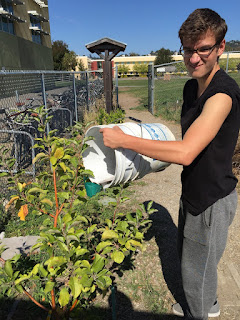This week was another great week in the classroom and on the farm in sustainable agriculture. We were tested on our knowledge of farm work and planting with a tough test on Tuesday. We also had many interesting discussions on Monday on the many facets of sustainability through water, agriculture and environmental systems as a whole.
On the farm we are making great strides in our year-two students main projects for this semester. Trevor Ryan and I were able to finish priming the chicken coup with its first full coat of paint. We should be able to finish painting soon so it’s ready for the possible El Nino and more importantly, the chickens. Once painting is done we will be able to prep the insides for our four chickens. Our other main project is the pond and at the helm is it's capable captain, Stevie. Wednesday proved fruitful as another good day of digging and shaping took place and we are all looking forward to its aesthetic presence once it's completed.
The main goal of the farm is food, and we are looking to have plenty of it. The one beds are looking very healthy and we are planning to have all sorts of good crops ready for you later next month. Soon it’ll be harvesting time and we will all be chowing down on some locally, sustainably grown produce.
--Alex J. [with edits--see later blog for coop "in progress" picture]















